SST Anomalies and Heat Waves. Are They Not All Just Heat Displacements? (by Diego Fdez-Sevilla, PhD)
“Heat waves” are Increases of temperature over a mean value. They usually are identified by the impact they have over living systems and therefore, are mostly linked with events happening over land. The increase of temperature is produced by a displacement of heat in location being carried by a mass of air. This displacement of heat is recognised as anomalous when moves into a location where induces extreme variation from its average climatic conditions.
Sea Surface Temperature anomalies, like the so called El Niño event, are also Increases of temperature over a mean value. The increase of temperature is produced by a displacement of heat in location being carried by a mass of water. This displacement of heat is recognised as anomalous when moves into a location where induces extreme variation from its average climatic conditions.
Anomalous and extreme increases of temperature have happen “simultaneously” through 2015 at the Pacific SST and over the West side of North America, Alaska, India and the South of Europe.
So if we call all those events by what they are instead of their acronyms, we can see a common pattern: the distribution of heat at Sea Surface and at Tropospheric level Over Land have suffered variations pointing to anomalous displacements of heat in location and seasonal timing.
That means that not only the state of the atmospheric and oceanic currents have allowed the intrusion of warmer than normal masses of “heat” but also, that the conditions at the location were favourable to also retain the heat.
Based on that point of view I believe that there is a question which has been overlooked. Not only what makes the conditions to induce displacements of heat in location and time, but moreover, which are the conditions which allow those displacements of heat to be transferred and settle in location?
As the First Law of Thermodynamics implies, matter and energy can not be created or destroyed (only converted between the two). Likewise, heat -the movement of energy from a hotter location to a cooler location- is never eliminated, but only moved elsewhere.
And therefore, we have to think on where is the heat being transferred coming from?, and which are the thermal conductivity characteristics of the medium carrying and retaining the heat?
Climate as a cooling system.
There are three primary modes of heat transfer.

Conduction – the transfer of heat through matter with no net displacement of the matter.

Convection – the circulatory motion of a gas or liquid caused by the variation of its density and the action of gravity and Coriolis effect (Earth rotation).

Radiation – the process of transferring heat by emitting electromagnetic energy in the form of waves or particles.
Thermal Conductivity is the amount of heat a particular substance can carry through it in unit time. And, Specific Heat Capacity is the amount of heat a particular substance can hold.
The transference of heat requires a medium. In out space the almost null concentration of molecules makes impossible the transference of heat so the temperature is bellow freezing, even under the constant exposure to radiation of electromagnetic energy from the Sun.
In climatic analyses, the location of heat quantities varies as the circulation based on Thermal Conductivity and Specific Heat Capacity in our Atmosphere and Oceans changes.
The amount of energy reaching our environment relies on our Sun. However, the Thermal Conductivity and Specific Heat Capacity in our Atmosphere and Oceans is dependent on their composition. Land cover characteristics (like the urban heat island effect, forests being substituted by crop activities and inland movement of surface water being depleted) altogether with Greenhouse gasses and aerosols composition, affect the thermal properties and behaviour of our atmosphere, as much as of our Oceans due to changes in Salinity and Acidification.
Common sense as a scientific reference.
Same as Rossby waves in the Polar Jet Stream indicates instability in the thermal barriers driving atmospheric circulation, it would be seen as logical that variations in SST (e.g. ENSO) are the result of processes of instability in the thermal conductivity of the Meridional Overturning Circulation (MOC) introducing inconsistencies in the Thermohaline circulation.
It seems that science is facing a challenge in just identifying which process leads the chain reaction and where it does happen. Is it at the atmosphere or in the Ocean, inland due to volcanic activity or outside the planet due to Solar Activity, Equatorial or at the Poles?
The specific heat capacities of water show to make it one of the best substances for holding and transferring heat. So we can consider that any energy entering the Planetary system will mostly be carried by this substance. Now, where is this energy being more actively integrated in climatic processes, in liquid or gas form, at the Oceans or in the Atmosphere?
My interpretation of the behaviour of the Ecosystem as a whole is that the first and fastest medium reacting to the energy entering the system is the atmosphere. And therefore the atmosphere leads, and the events found in the other mediums follow.
Accordingly, the relevant mechanisms to be understood would be those atmospheric mechanisms which trigger changes in the dynamics of the thermodynamic atmosphere. And, from there, the interconnections which trigger the following events, like the Westerlies at the Equatorial Pacific inducing the increase in temperature so called ENSO.
Thresholds or Anomalies. Are we chasing ghosts?
Inconsistencies between standardised indexes and atmospheric circulation have been happening already for some time.
The consideration of westerlies pushing warm waters from the West to the East Pacific to explain the ENSO just describes a process, it does not justify its presence and “purpose”. Applying wind direction to explain ENSO should directly focus the attention over predicting its origin based on identifying an increase in the strength of those Westerlies. Accordingly, the relevant mechanisms to be understood would be those atmospheric mechanisms which trigger such changes in the dynamics of the thermodynamic atmosphere at the Equatorial Pacific. However, inconsistencies between standardised indexes and atmospheric circulation have been happening already for some time:
- The concept of a broken Polar Vortex as the explanation for a wobbly jet Stream bringing Polar weather to subtropical latitudes was much overused to explain the Winter 2013/14. Very similar polar weather intrusions happened in the Winter 2014/15 and yet, without a persistent Polar Vortex broken.
- The configuration of the positive NAO in 2014/15 did not quite match with the patterns associated to this phase.
- Trio of tropical depressions formed in the Pacific equator, at similar location, in a year without a categorised positive ENSO in 2014 and in a year with a categorised strong positive ENSO in 2015.
- A strong positive ENSO is associated with low cyclonic activity over the Western Equatorial Pacific and even thought, the present conditions of SST have pointed to a strong El Niño, there is no decrease in the activity being seeing at the Western Pacific. Furthermore, a positive ENSO is also associated with a calm period in the Caribbean sea which has been interrupted by the recently formation of the tropical cyclone Joaquin.

Settled knowledge.
When we study the behaviour of our environment there is a common agreement over the idea of that it is in constant change. That idea implies to assume that the environment is sensitive to pressures (internal and external) triggering those changes. Furthermore, the combination of both ideas, a sensitive environment in constant change, can only be understood considering that the stability of any pattern is only constant for as long as the conditions under which it happens keep constant.
So, for how long can we expect and project future patterns of behaviour in any of the actual sources of variation identified when our environment is under constant transformation?
- Should we expect that Solar variations are going to have the same effect over the climate as thousand years ago? What is it so similar between both situations? (more here)
- Should we consider the NAO, the ENSO, the MJO, settled patterns behaving as constants over time from which we can make projections or just mere features as part of a transition through time? (more here) Has anybody considered that the reason why there are discrepancies between years with the same phase signal might point to this idea?
Some situations in our environment (anomalies and oscillations) have been “shaped” with the effort of “standardising” patterns in order to predict outcomes. From Solar activity to Atmospheric and Oceanic dynamics, those standardizations can serve a purpose in a particular period of time, but they are not settled and should not be expected to keep constant over time under the pressure from constant transformations over those same factors which are involved in driving their performance, such as atmospheric, land and ocean composition and structure.
What if the NAO as it was defined by Barnston and Livezey 1987, was just a position in the atmospheric circulation as part of a transition accommodating new pressures and its standardization does not longer apply (more discussion here)?
What if the ENSO is more dependant than dominant over the result of alterations in some other parts of the circulation outside the Pacific, either atmospheric or Oceanic? (more discussion here)
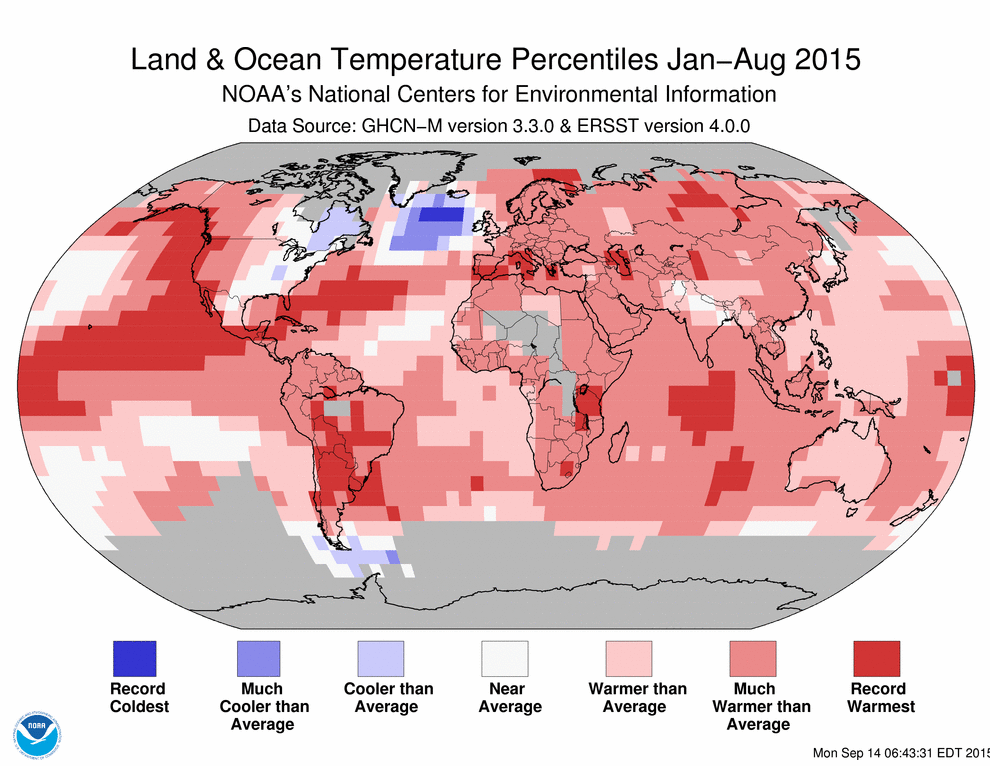
More about this image here,here and in the following article: Why some scientists are worried about a surprisingly cold ‘blob’ in the North Atlantic Ocean. here
Acronyms have the risk of overtaking critical thinking and become “profiles” in a social media platform of scientists, with a huge number of members in their network, whom have stop from asking themselves what those acronyms stand for and what they really mean.
Atacama, case scenario.
On April 2015 Chile suffered from devastating floods occurred due to heavy rainfall over the Atacama dessert. In all forms of media it has been reported the severity of the increase in SST over the Pacific and therefore, any climatological event happening seems to be related to it. But, should we get dragged by our scientific dogmas so easily?
My interpretation, the heavy rains came after several days of high temperatures and a drought that stoked raging wildfires in Chile’s south-central regions. The fires burned nearly 93,000 hectares in the 2014-2015 season, far above the annual average of 59,300 hectares over the previous five years. Furthermore, the Villarica volcano in the country’s south, erupted on 3 March, forcing evacuations and disrupting air traffic. Atmospheric currents were dominated Northward due to a combination of a H east Pacific and a L in the low West Atlantic, resulting in an explosive combination of heat wave, humidity and aerosols.
About its relationship with abnormal temperatures in the Pacific, I doubt it. The SST in the west Pacific, compared with previous years, do not show nothing especial in magnitude or by timing in relation with lags responses between Temp anomalies and weather events.
 Thanks to the Amazonian forest, the amount of water vapour travelling over the South American continent has shown to be sufficiently strong to even interfere with the jet stream on its own, without the help from the ENSO. More here
Thanks to the Amazonian forest, the amount of water vapour travelling over the South American continent has shown to be sufficiently strong to even interfere with the jet stream on its own, without the help from the ENSO. More here
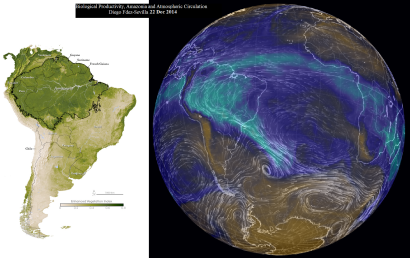 Solar activity
Solar activity
Even considering that the Solar influence over our planet defines the expression of nature as we know it, and keeps fuelling the thermodynamic behaviour of our atmosphere, the activity being shown in the present cycle is one of the lowest. And even for the present cycle it is moving towards a lower activity phase.
From heat waves to water vapour waves
Heat has moved like waves reaching northern latitudes over Europe in an unprecedented manner through this summer
 At this part of the year, 15th Oct 2015, we are in the transition from summer to winter, and new types of waves are happening in our atmosphere. This time, these are the waves which carry water vapour into northern latitudes.
At this part of the year, 15th Oct 2015, we are in the transition from summer to winter, and new types of waves are happening in our atmosphere. This time, these are the waves which carry water vapour into northern latitudes.
This last image shows the current of warm and wet air moving over the Atlantic Ocean into the North Polar Latitudes. (15th Oct 2015. Meteosat Microphysics. Eumetsat)
Closing remarks
Based on previous observations (choose category and look at the posts related or more on thermal conductivity here, applying perspective here and here, climatic drift here, keeping an eye over Atlantic developments here, Pacific developments here, Arctic developments here and here, and Solar activity here) and present conditions, I believe that the driver behind all perturbations and oscillations identified in our planet lies on destabilizing the Arctic circulation from enhancing the capacity of the atmosphere to contain water vapour due to increasing conc of GHGs and aerosols.
 And the repercussions follow a pattern coherent with those discussed in previous posts such as A roller coaster of temperatures in South Europe and “A climate between waters”.
And the repercussions follow a pattern coherent with those discussed in previous posts such as A roller coaster of temperatures in South Europe and “A climate between waters”.
Feedback and constructive comments are welcomed.
—- xxx —-
(This post is part of a more complex piece of independent research. I don´t have founding, political agenda or publishing revenues from visits. Any scientist working in disciplines related with the topics that I treat in my blog knows how to judge the contribution that my work could potentially add to the state of knowledge. Since I am in transition looking for a position in research, if you are one of those scientists, by just acknowledging any value you might see from my contribution, would not only make justice to my effort as independent researcher, but ultimately, it will help me to enhance my chances to find a position with resources to further develop my work.
I believe that the hypothesis that I have presented in previous posts in this blog (here,here and here) could help to understand present and possible future scenarios in atmospheric circulation. However, this is an assessment based on observation which needs to be validated throughout open discussion and data gathering. So please feel free to incorporate your thoughts and comments in a constructive manner.
If you feel like sharing this post I would appreciate to have a reference about the place or platform, by private or public message, in order for me to have the opportunity to join the debate and be aware of the repercussion which might generate d.fdezsevilla(at)gmail.com)
For anybody interested in the posts related with this discussion here I leave you those more relevant in chronological order (there are comments bellow some of them. Please check them out):
- New theory proposal to assess possible changes in Atmospheric Circulation (by Diego Fdez-Sevilla) Posted on October 21, 2014. http://wp.me/p403AM-k3
- Why there is no need for the Polar Vortex to break in order to have a wobbling Jet Stream and polar weather? (by Diego Fdez-Sevilla) Posted on November 14, 2014. http://wp.me/p403AM-mt
- Gathering data to make visible the invisible (by Diego Fdez-Sevilla) Posted on December 22, 2014. http://wp.me/p403AM-pN
- State of the Polar Vortex. Broken? From 29 Nov 2014 to 5th Jan 2015 (by Diego Fdez-Sevilla). Posted on November 29, 2014. http://wp.me/p403AM-o7
- Probability in the atmospheric circulation dictating the Weather (by Diego Fdez-Sevilla) Posted on January 15, 2015. http://wp.me/p403AM-rm
- Meteorological Outlook Feb 2015 (by Diego Fdez-Sevilla) Posted on February 7, 2015. http://wp.me/p403AM-sU
- Revisiting the theory of “Facing a decrease in the differential gradients of energy in atmospheric circulation” by Diego Fdez-Sevilla. Posted on February 10, 2015. http://wp.me/p403AM-to
- Matching Features Between Land Surface and Atmospheric Circulation (by Diego Fdez-Sevilla)April 23, 2015
- Drops of Weather. (by Diego Fdez-Sevilla)March 7, 2015
- Steering climate´s course (by Diego Fdez-Sevilla)March 27, 2015
- Climate. Looking at the forest for the trees (by Diego Fdez-Sevilla)April 9, 2015
- Matching Features Between Land Surface and Atmospheric Circulation (by Diego Fdez-Sevilla)April 23, 2015
- Domesticating Nature. (by Diego Fdez-Sevilla)May 7, 2015
- A roller-coaster of temperatures in South Europe. Spain (by Diego Fdez-Sevilla)May 14, 2015
- Talking about climate (by Diego Fdez-Sevilla)May 12, 2015
- News from an Ecosystem (by Diego Fdez-Sevilla)May 20, 2015
- In climate it is becoming Less probable to not have a High probability. (by Diego Fdez-Sevilla)May 29, 2015
- Drinking from the source (by Diego Fdez-Sevilla)June 5, 2015
- Communication takes more than just publishing thoughts. (by Diego Fdez-Sevilla)June 9, 2015
- Extreme climatic events, implications for projections of species distributions and ecosystem structure (by Diego Fdez-Sevilla)June 18, 2015
- The scope of Environmental Science and scientific thought. From Thought-driven to Data-driven, from Critical Thinking to Data Management. (by Diego Fdez-Sevilla)June 26, 2015
- Atmospheric Circulation and Climate Drift. Are we there yet? (by Diego Fdez-Sevilla)July 2, 2015
- Lateral thinking. From Micro to Macro (by Diego Fdez-Sevilla)July 4, 2015
- Something for the curious minds. Climate and Streamlines (by Diego Fdez-Sevilla)July 17, 2015
- Solar Activity and Human Activity, Settling Their Environmental Liability. (by Diego Fdez-Sevilla)July 24, 2015
- Atmospheric composition and thermal conductivity? (by Diego Fdez-Sevilla)August 6, 2015
- Latitudinal barriers and typhoons (by Diego Fdez-Sevilla)August 13, 2015
- The Earth is Ticking (by Diego Fdez-Sevilla)August 20, 2015
- What if, the relevant bit lies hidden on identifying the pattern behind similarities instead of trying to match anomalies? (by Diego Fdez-Sevilla)September 3, 2015
- A Climate “Between Waters” (by Diego Fdez-Sevilla).September 8, 2015
- Sensing Atmospheric Dynamics (by Diego Fdez-Sevilla)September 22, 2015
- InFormAtion. The “Act” of “Giving Form” to “Knowledge” (by Diego fdez-Sevilla)September 30, 2015
- Arctic Intake of Water Vapour (by Diego Fdez-Sevilla)October 7, 2015


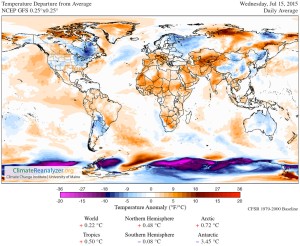

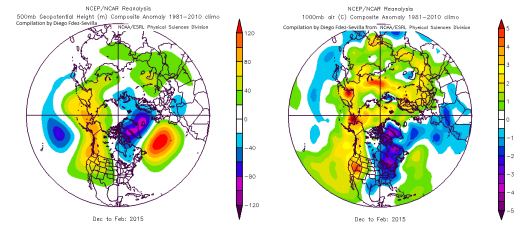

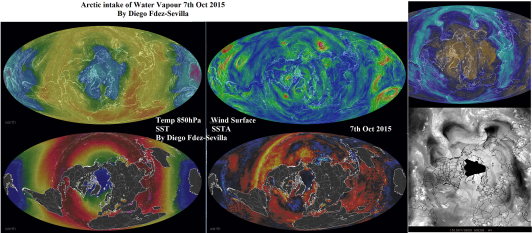

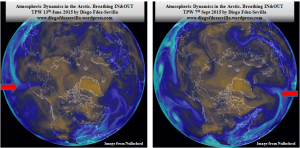
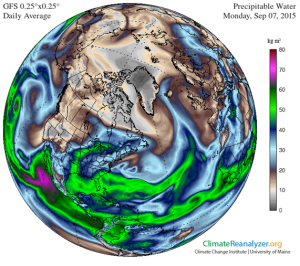
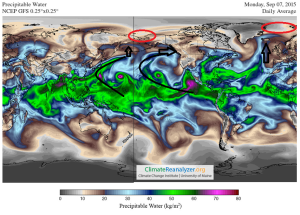



 Would you like for this line of research to keep going, please consider to nominate it for an award for funds at
BBVA Fundation. FRONTIERS OF KNOWLEDGE AWARDS
https://www.frontiersofknowledgeawards-fbbva.es/conditions/
Would you like for this line of research to keep going, please consider to nominate it for an award for funds at
BBVA Fundation. FRONTIERS OF KNOWLEDGE AWARDS
https://www.frontiersofknowledgeawards-fbbva.es/conditions/ orcid.org/0000-0001-8685-0206
orcid.org/0000-0001-8685-0206

Pingback: The True Meaning of Things (by Diego Fdez-Sevilla , PhD.) | diego fdez-sevilla, PhD.
Pingback: Summer is what summer brings (by Diego Fdez-Sevilla, PhD) | diego fdez-sevilla, PhD.
Pingback: In Climate, Too Many Strange Things Are Happening (by Diego Fdez-Sevilla, PhD) | diego fdez-sevilla, PhD.
Pingback: Between Global Cooling and Global Warming There Is “Global Mixing” (by Diego Fdez-Sevilla, Ph.D.) | diego fdez-sevilla, PhD.
Pingback: Solar Forcing in Our Climatic and Atmospheric Dynamics. Location, Location, Location (by Diego Fdez-Sevilla, Ph.D.) | diego fdez-sevilla, PhD.
Pingback: Forecasting Past Events In Atmospheric Dynamics (by Diego Fdez-Sevilla, Ph.D.) | Diego Fdez-Sevilla, PhD.
Pingback: A conversation between Joaquin and Matthew (by Diego Fdez-Sevilla, PhD.) | Diego Fdez-Sevilla, PhD.
Pingback: Global Mixing in Atmospheric Dynamics (by Diego Fdez-Sevilla Ph.D.) | Diego Fdez-Sevilla, PhD.
Pingback: Energy in our environmental systems. Follow-up on previous assessments. (by Diego Fdez-Sevilla, Ph.D.) | Diego Fdez-Sevilla, PhD.
Pingback: Another Heat Wave Another Polar Vortex II … Broken (by Diego Fdez-Sevilla, Ph.D.) | Diego Fdez-Sevilla, PhD.
Pingback: From Juno and Jonas to Janet (By Diego Fdez-Sevilla, Ph.D.) | Diego Fdez-Sevilla, PhD.
Pingback: Forecast Unusual (by Diego Fdez-Sevilla PhD) | Diego Fdez-Sevilla, PhD.
Pingback: Atmospheric Thermal Conductance (by Diego Fdez-Sevilla, PhD) | Diego Fdez-Sevilla, PhD.
Pingback: Just Thinking on Climate (by Diego Fdez-Sevilla, PhD) | Diego Fdez-Sevilla, PhD.
Pingback: “The Answer to the Ultimate Question of Life, the Universe, and Everything” is … 42 (by Diego Fdez-Sevilla, PhD) | Diego Fdez-Sevilla, PhD.
Pingback: RECAP on previous assessments (by Diego Fdez-Sevilla, PhD) | Diego Fdez-Sevilla, PhD.
Pingback: Worst than a change is a pattern of no change ( by Diego Fdez-Sevilla, PhD) | Diego Fdez-Sevilla, PhD.
Pingback: Orbital Melting vs Kinetic Melting (by Diego Fdez-Sevilla, PhD) | Diego Fdez-Sevilla, PhD.
Pingback: Temp Displacements. Solid Water In A Dessert Which Is Not At The Poles. (By Diego Fdez-Sevilla, PhD) | Diego Fdez-Sevilla, PhD.
Pingback: Following The Herd on Assessing Climatic Dynamics (by Diego Fdez-Sevilla PhD) | Diego Fdez-Sevilla, PhD.
Pingback: Breaking Stereotypes Assessing Climatic Dynamics (by Diego Fdez-Sevilla PhD) | Diego Fdez-Sevilla, PhD.
Pingback: Statistical Significance and The Scary Side of Being Mild (by Diego Fdez-Sevilla PhD) | Diego Fdez-Sevilla, PhD.
Pingback: Atmospheric Composition and Thermal Conductivity. (by Diego Fdez-Sevilla, PhD) | Diego Fdez-Sevilla, PhD.
Pingback: Something for the curious minds. Climate and Streamlines (by Diego Fdez-Sevilla, PhD) | Diego Fdez-Sevilla, PhD.
Pingback: Energetic Pulses in Atmospheric Circulation Unsettle Our Climatic Scenarios (by Diego Fdez-Sevilla PhD) | Diego Fdez-Sevilla, PhD.
Pingback: Memories of an Independent Researcher. “Don’t ask, don’t tell.” by Diego Fdez-Sevilla PhD | Diego Fdez-Sevilla, PhD.
Pingback: A pattern of change in the atmosphere beyond considering global warming or cooling. That is, global mixing. (by Diego Fdez-Sevilla PhD) | Diego Fdez-Sevilla, PhD.
Pingback: Misleading Concepts in Arctic Circulation (by Diego Fdez-Sevilla, PhD) | Diego Fdez-Sevilla, PhD.
Pingback: In Science Worst Than Using Beliefs to Make Decisions For You, Is Doing It and Not to Be Aware of It. (by Diego Fdez-Sevilla PhD) | Diego Fdez-Sevilla, PhD.
Pingback: Research on real-time Climatic developments. 2018 Review over the line of research presented by Diego Fdez-Sevilla PhD | Diego Fdez-Sevilla, PhD.
Pingback: 16 May 2019 Follow-Up on Atmospheric Dynamics over Europe and Climatic Implications (By Diego Fdez-Sevilla PhD) | Diego Fdez-Sevilla, PhD.
Pingback: Climate and Weather. Lost in translation? (By Diego Fdez-Sevilla PhD) | Diego Fdez-Sevilla, PhD.
Diego, I see you continue doing relevant Research. It makes a lot of sense to me. You analyze a lot of information and raise valid questions. The pace of Research is slow as new information comes in. I would suggest you to contact United Nations as an institution that could be interested in your work and could interact with you with a scientific purpose. Please continue doing your excellent work. Perhaps I will come back later here to touch one fundamental issue that you have mentioned in this Article.
LikeLike
Thanks Jaime for your thoughts.
Throughout the whole study that I have carried out since 2013 I have called the attention of all major institutions in the world. If they choose to respond with silence that is nothing I can do about.
Latest example you can find it couple of weeks ago in my publications at LinkedIn
18July2019 Follow-up and reshare:
October 9, 2017 Statistical Significance and The Scary Side of Being Mild ( Diego Fdez-Sevilla PhD DOI: 10.13140/RG.2.2.21934.61767
https://www.linkedin.com/posts/diegofernandezsevilla_statistical-significance-and-the-scary-side-activity-6555781358524915713-hKYu
Hurricanes are very stable structures which do not form easily under unstable conditions and that is why I keep seeing my take on atmospheric developments being reinforced by current dynamics. That and the fact that the instability is generated by a mixing pattern between warm mid-latitudinal forcing into northern latitudes while cold masses of air are being displaced from the Arctic into lower latitudes. My bigest concern in the overall picture is that beyond seeing the formation of Cyclones at different longitudes as those in the Pacific, the Indian into Africa and even storms hurricane like over the Atlantic, the biggest changes are observed in the environmental atmosphere in which those are form. And since cyclones are the most eye catching features observable, those can deviate the attention over the higher number of small atmospheric events developing at regular bases throughout an increasing period. I believe I have covered all my arguments in my publications but I keep an open mind if any one wants to highlight any incoherence in those. Our problems comes with the shortsighting over localised events by considering them isolated.
Comment added (Diego Fdez-Sevilla PhD):
https://www.linkedin.com/feed/update/urn:li:activity:6555781358524915713?commentUrn=urn%3Ali%3Acomment%3A%28activity%3A6555781358524915713%2C6556649911687921664%29
*. Throughout my latest years sharing my line of research I have been actively seeking collaboration with the community positioned in different areas. Among those in my network there are also other Johns whom I would like to invite to share their point of view John Ogren, at nationak weathet service John Jediny at data.gov and John Krasting at NOAA. Also Anthony Sambucci meteorologist at NOAA, Ed Berry meteorologist, Elisabetta Vignati head of air and climate at EU, Giulio Betti meteorologist at Lamma CNR Italy, Isabel Zubiaurre meteorologist director at national television, Jaakko Kukkonen Professor at finnish meteorological institute, Riccardo Biondi at univ studi de Padova, Will Steffen at climate council of Australia, Ayse Altunoglu project coordinator at wmo, Dick Dee head Copernicus Climate change service ar ECMWF, Marshall Shepherd professor atmospheric sciences, Paul Newman at NASA, Paul Beckwith climate analyst. From 600+ followers only 470 have chosen to be members of my “network”. These are the names of a small group I’m calling for their interaction aimed to enhance the work that I present by seeking feedback from those representing all areas of knowledge.
LikeLike
27July 2019 Follow-up and Reshare at LinkedIn
https://www.linkedin.com/posts/diegofernandezsevilla_sst-anomalies-and-heat-waves-are-they-not-activity-6560904831039520768-eI-d
We are facing a challenge confronting those changes observed in our weather developments. And furthermore we are living the uncertainty behind our ability to understand it. We have a problem which comes defined by understanding the limitations of the knowledge handled as settled. We are facing the challenge of understanding the meaning behind the gaps of knowledge left aside from consideration, many times hiding them due to the fear of those jeopardising the level of certainty associated with the concept of success, credibility and reputation. The temps at the North Hemisphere are among the highest recorded but without the justification of the El Niño. That is not an anomaly, is a wake-up call.
SST and ENSO
October 16, 2015 SST Anomalies and Heat Waves. Are They Not All Just Heat Displacements? (by Diego Fdez-Sevilla PhD) DOI: 10.13140/RG.2.2.23741.05608
December 11, 2015 Could It Be El Niño The New “Wolf” Coming? (by Diego Fdez-Sevilla) DOI: 10.13140/RG.2.1.3238.2801
March 22, 2016 Pacific atmospheric dynamics with and without a positive ENSO (by Diego Fdez-Sevilla, PhD) DOI: 10.13140/RG.2.1.1968.5521
June 23, 2017 “Seasonal Outlook. June 2017 (By Diego Fdez-Sevilla PhD) DOI: 10.13140/RG.2.2.25428.91528
Filling in Finding Out gaps of knowledge” #climatechange
I offer for agreement an interpretation over current dynamics based on:
The line of research here presented I discusses throughout more than 150 analyses that atmospheric patterns associated with weather events point to an increase in atmospheric instability as the result of an increase in global mixing dynamics between two fluids with different densities, those from MidLatitudes and the Poles (Arctic). Reducing the stratification in the amount of energy in free state carried by those masses.
In the framework presented it has been considered “Climate” as being defined by the amount of energy free to do work. In other words, energy free to promote weather events. Accordingly, I define Climate by the amount and state of energy in circulation, and Weather by the use of this energy.(ref)
The theoretical proposal part of the present line of research (ref2013 and ref2014) points out that an increase in the amount of free energy contained at the Meridional atmosphere (Equator and Mid Lat) will expand into higher latitudes and altitudes (e.g. Sudden Stratospheric Warming) thanks to an enhanced thermal capacity of the atmosphere due to CO2 forcing using water vapour as the carrier transporting and releasing such extra pool of energy.
LikeLike
My intention with re-sharing analyses and assessments from my line of research published in previous years lies on validating their significance and accuracy against real time developments which anyone can describe by their own means or by reading descriptions offered by many in the media.
In this line of action, and looking at the actual dynamics seen in the global circulation, the current presentation on global mixing patterns should be extended with at leats another two:
January 13, 2016 Atmospheric Dynamics And Shapes (by Diego Fdez-Sevilla PhD) ResearchGate DOI: 10.13140/RG.2.2.35973.65765
May 16, 2019 Rayleigh–Taylor instabilities in Atmospheric Circulation. Follow-Up on Atmospheric Dynamics and Climatic Implications (By Diego Fdez-Sevilla PhD) Registered DOI: 10.13140/RG.2.2.26791.80805
All these analyses are published openly and free of any charge at diegofdezsevilla.wordpress.com and reseachgate as well as throughout my storyline at LinkedIn since its begining in 2013 and further to show my commitment with my words at web.archive.org
LikeLike
Pingback: 6 Years Anniversary on a new Theory on Climate and Atmospheric Developments: “Facing a decrease in the Gradients of Energy in Atmospheric Circulation.” By Diego Fdez-Sevilla PhD. | Diego Fdez-Sevilla, PhD.
Pingback: The Weather that shapes a Climate and the Climate that enables a typology of Weather. D. Fdez-Sevilla PhD | Diego Fdez-Sevilla, PhD.
Pingback: A New Atmospheric Configuration Settling Throughout the Years Shows Rayleigh-Taylor Instabilities Driving Weather Patterns Throughout Seasons Having an Impact on the Overall Climate (by Diego Fdez-Sevilla PhD) | Diego Fdez-Sevilla, PhD.